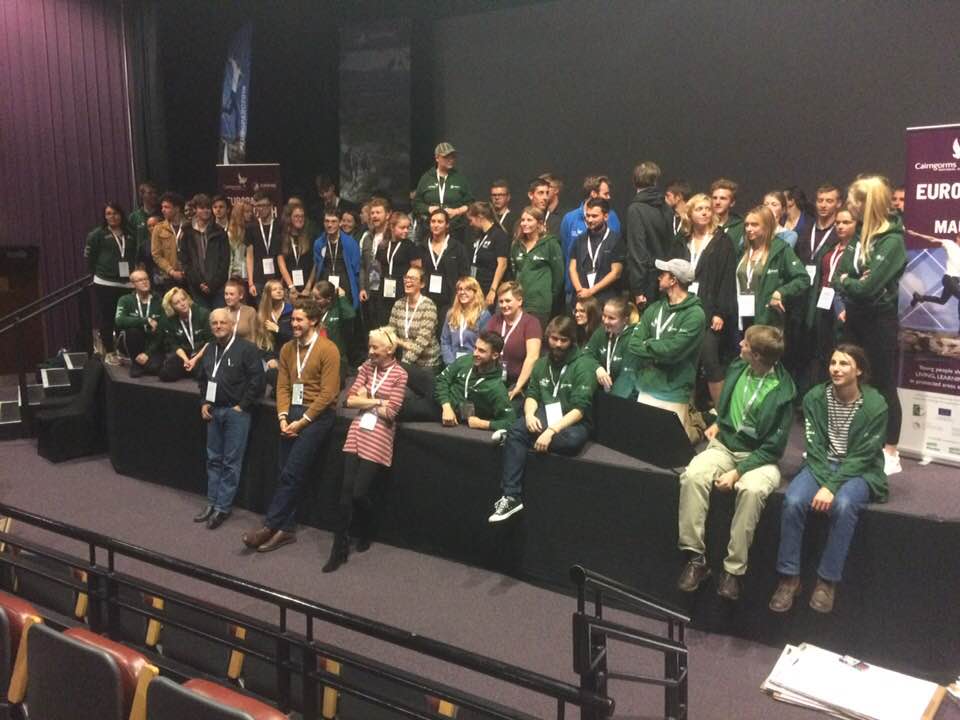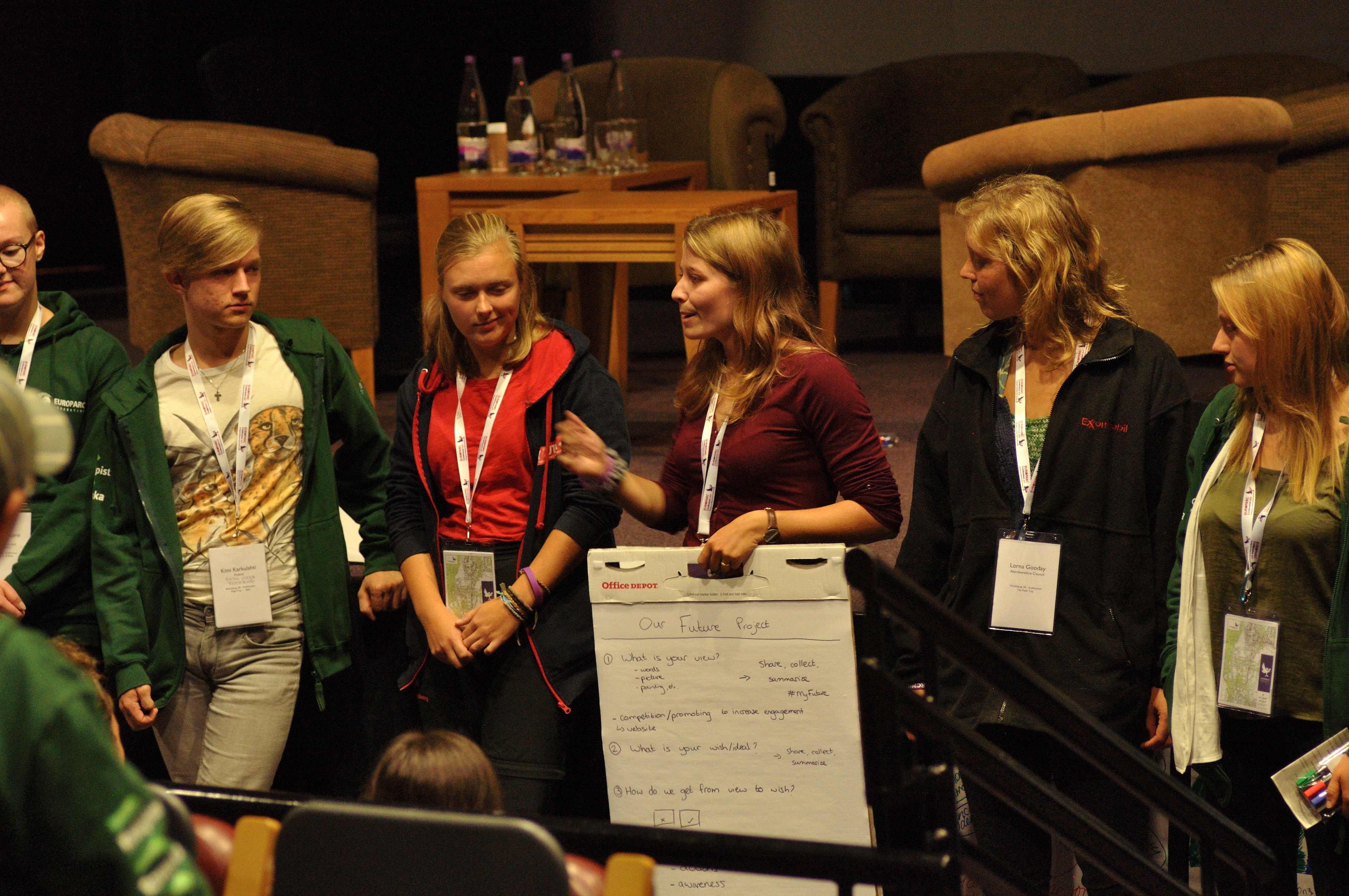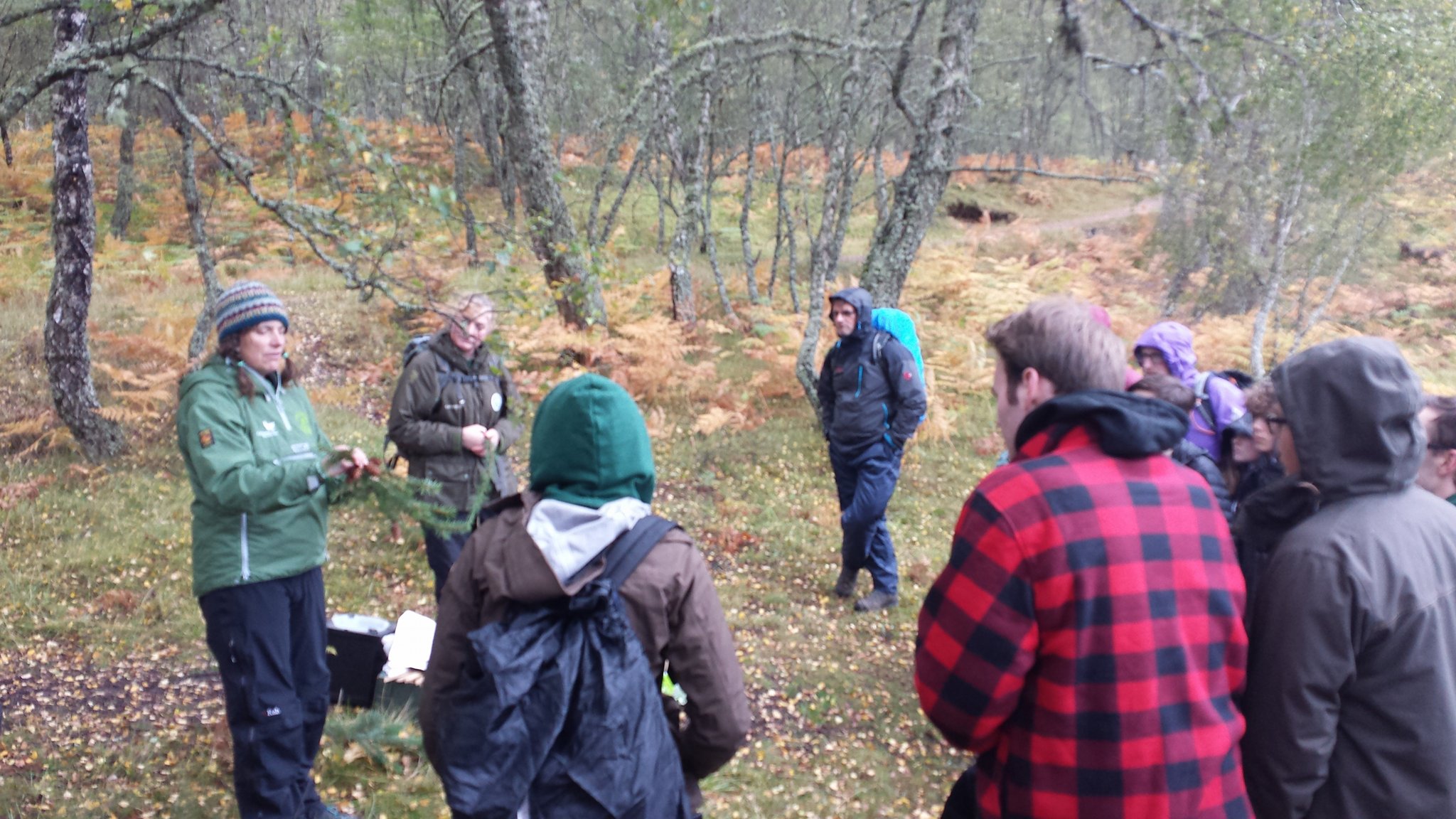Youth getting ready to lead – Throwback to Youth Workshop Sessions at EUROPARC Conference 2018
How to lead environmental games connecting people with nature? How to make a difference and create change in communities?
As every year, delegates at EUROPARC Conference 2018 had the chance to choose from a broad range of 3-hour-workshops allowing to explore and discuss in-depth about topics relevant to Protected Area Management. The only downside to this valuable format? It means spending even more time indoors.
In this respect the young delegates aged below 30 were the true lucky ones – getting the best of both worlds in their workshop on how young people can take the lead for nature and take action to make a difference in their communities.
 They started off their workshop session indoors, working in small groups to think up projects that could help bring about changes in their own local places. Afterwards they put on their outdoor gear and and set off to learn some practical skills needed to take the lead in environmental games and connect people with nature.
They started off their workshop session indoors, working in small groups to think up projects that could help bring about changes in their own local places. Afterwards they put on their outdoor gear and and set off to learn some practical skills needed to take the lead in environmental games and connect people with nature.
The first workshop part was supported by the Conference keynote speakers Hendrikus van Hensbergen – founder of the youth charity “Action for Conservation” inspiring a youth movement committed to conservation – and Richard Louv – journalist and author of nine books, including Last Child in the Woods and Chairman Emeritus of the Children & Nature Network working to connect children and their families to nature worldwide. The basic idea of this session was to bring young people from all over Europe together in small groups and let them discuss where they see the need for change. Then, the task for each group was to come up with a joint project idea – showing how they could help bring about that change. Each group had one minute to pitch their project sketch to their peers, Richard Louv and Hendrikus van Hensbergen.

What youngsters came up with in short time was impressive and to everyone’s surprise ideas were not only creative, but proved to be pretty solid starting points ready to be fine tuned and implemented. What most ideas had in common was their keenness to use social technology and their focus on creating more open-minded and inclusive rural communities, viable job perspectives and promoting environmentally conscious behavior.
After the short presentations some youngsters who were interested to actually make their ideas happen engaged in exchange with Richard Louv and Hendrikus van Hensbergen who offered to support with their advise. One take-away message of that first workshop part was:
Exchange with peers about the issues that matter to you, believe in your own ideas and be courageous to take the first step – each one of us makes a difference.
For part two, the young workshop participants needed their raincoats. Scotland treated them to an authentic weather experience, which was no obstacle to the three sessions planned on leading environmental games in the nearby surroundings. Divided into three groups, the workshop participants went outdoors to learn with Rangers of the Cairngorms National Park.
- Leading environmental games
A hands-on and interactive session to experience ways of delivering environmental games and activities. In this workshop, youngsters did not only learn games suggested by the workshop leaders. After all, it was all about learning how to lead and inspire, so participants got the opportunity to get creative themselves: They chose random toys and materials provided by the workshop leaders and using those, they invented their own games in small groups. All games were tested on the spot and showed: From viking hat, to toy rabbit to rope – any object served the young leaders well as a game starter. There was – maybe given the wet and chilly weather – clear preference for quick and simple games making everyone in the group move.
- Teaching bushcraft
This session was about gaining the understanding and skills to deliver basic bushcraft sessions, such as lighting fire, tool use and shelter building. Never mind the rain, participants managed to light some small fires and warm their hands before moving on. Most of them had made fires many times before, focus here was on learning how to teach beginners how to handle the fire lighting safely.
- Improving ID skills
The ID session took participants out to the local Craigellachie (National Nature Reserve) NNR where they learned about different ways to help people to develop some basic nature ID skills and connect them with the natural environment through activity. The youngsters looked at some simple keys and hints for identifying common species of trees, plants and animals and discussed how to choose the appropriate material for different target groups. For instance it is helpful to know what learning types are there in your group – are there visual learners, who memorize and understand best looking at pictures? Are there people who prefer to read in detail about species characteristics? To get people excited and help them connect it matters most to provide an accessible, engaging and rewarding experience, that is sensible towards different levels of knowledge and considers their motivation to join the activity.

The EUROPARC Conference 2018 was hosted under the title “European Parks: inspired by the next generation”. It was focused on youth involvement in Protected Areas and commemorated the current Scottish Year of Young people 2018. Find a full overview of all Conference days on our dedicated page and make sure you don’t miss out on the impressions in our official photo album – delegates in kilts are just one out of many highlights you will find there!